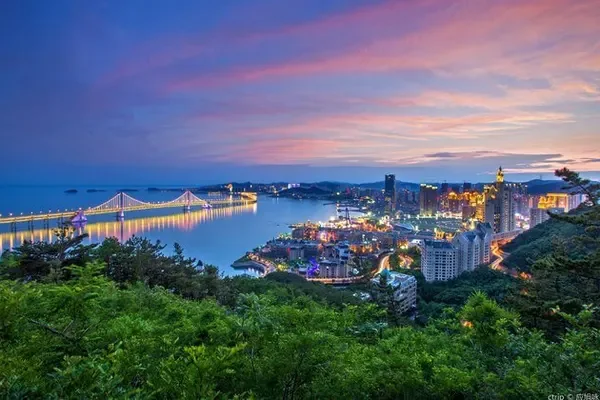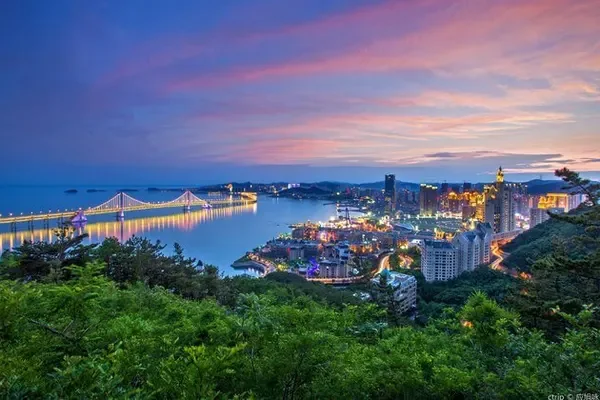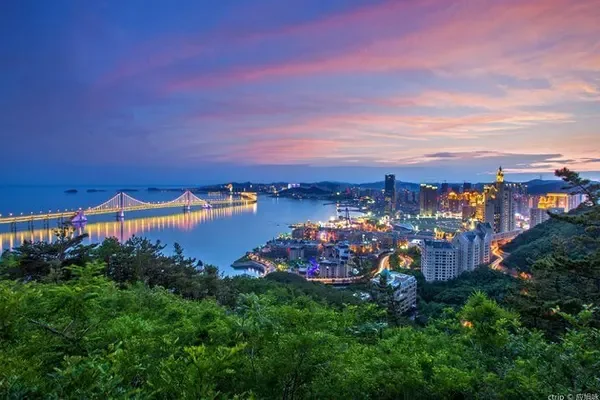At 7:00 am on September 3, 2020, I had a buffet breakfast at the hotel, and took bus No. 18 to Hengshui Luli Ancient Town. Bus No. 18 departs from the railway station and goes directly to Luli Ancient Town. You can take it at any stop on the way, and the fare is only 1 yuan.
I really didn't know anything about the ancient town of Luli before I set off, but I discovered it by accident while doing my homework. According to the information, Luli Ancient Town is located on the east side of National Highway 106, Weitun Town, Binhu New District, Hengshui City, with a total area of 4150 mu and a total investment of 2.5 billion yuan. Relying on the wetland scenery of Hengshui Lake, Luli Ancient Town inherits the national spirit of "ancient Jizhou", the first of Kyushu, advocating morality, courtesy, and self-improvement. It takes the Han elements represented by "Luli" as cultural symbols, and promotes the traditional culture of the Chinese nation as its core content. Create a national Han culture tourism town that integrates cultural industry, tourism industry, and beautiful countryside construction.
"Lvli" is a description of the life pictures of ancient streets and alleys, a symbol of the prosperity of the market culture in the Han Dynasty, carrying the essence of the folk culture of the Han Dynasty, and expressing the traditional cultural life atmosphere of "neighborhood harmony, mutual help" that Luli Ancient Town will carry forward.
On August 18, 2018, the Hebei Provincial Tourism Resources Planning and Development Quality Evaluation Committee issued a public announcement. According to the evaluation results of the provincial 4A-level tourist scenic spot landscape quality evaluation meeting, after research, Luli Ancient Town Scenic Spot passed the creation of 4A-level scenic spot landscape quality evaluation.
In May 2020, the Hebei Provincial Department of Culture and Tourism organized a comprehensive evaluation according to the procedures, and completed the public announcement on May 15, 2020, and determined that Luli Ancient Town Scenic Spot is a national 4A-level tourist attraction.
At present, the key cultural tourism projects in the construction of Luli Township include:
1. Qinseyuan Inn
The Han culture theme resort hotel takes the etiquette of the guests of the Han Dynasty as the core. The overall planning layout fully embodies the essence of urban planning in the Han Dynasty in China. It draws on the planning model of the "lifang system" in the Han Dynasty and refines and optimizes it to form a basic pattern of "five households and one neighborhood, five neighborhoods and one mile". It is named after the philosopher Dong Zhongshu of the Western Han Dynasty The Donggong River flows quietly beside the park, and this great Confucianism brings people's infinite reverie about the prosperous Chinese man.
2. Sun Jing College
The places where Chinese teenagers can experience Chinese culture education include Sun Jing School, Sun Jing Hanshe, and Sun Jing Grand Theatre. Among them, Sun Jing School is a traditional cultural education base with the core of traditional cultural experience, traditional cultural education and training, China's first private school, Sun Jing Temple, and auditorium. Sun Jing Hanshe is an inn with the theme of Chinese studies for children. It is one of the important places for children to learn daily etiquette, and it is also an important supporting facility for Sun Jing School. Sun Jing Grand Theater is the first traditional culture-themed theater in the country, with children's Chinese-themed stage plays, Han culture-themed stage plays, and Hebei characteristic folk-custom plays as the leading projects.
3. The wedding ceremony
The country's original Han culture marriage and love sanctuary, the place where Han style weddings are held. It consists of 9 main projects: Han Wedding Museum, Main Wedding Hall, Wedding Theme Performance Square, Han Clothing Exhibition Center, Han Clothing Experience Center, Han Marriage Culture Feature Tourism Node, Han Marriage Culture Node, Micro Film Exhibition Hall and Micro Film Shooting Base. The majestic Chinese-style wedding is based on the Zhou rituals, with elegance, nobility, and solemnity as the charm. It traces back to the source and is a national wedding that truly embodies the classic Chinese culture and tradition. The cultural spirit of belief, oath, master and subordinate, equality, and responsibility is the core principle of Chinese weddings. The panorama reproduces the six pre-marriage ceremonies (Na Cai, Asking Names, Najib, Na Zheng, and asking for a date) and the formal wedding (Personal Greeting, Washing, Joining Together, Unraveling and Tying Hair, Holding Hands and Oath).
However, when I arrived at Luli Ancient Town, I didn’t feel like I had the experience of a 4A-level scenic spot. It was said on the Internet that there were tickets, but in fact, except for Sun Jing School, the rest were free. Even in the paid scenic spots, the tour is also very monotonous. There are only antique buildings without rich ancient charm. The newly built buildings, blocks, and gates in the ancient town are deserted, and the popularity is low. Friends who have never been here are not recommended to visit here. We hurried around for about an hour, and immediately returned by No. 18. The next scenic spot on the way, Hengshui Lake, made us full of expectations.










































